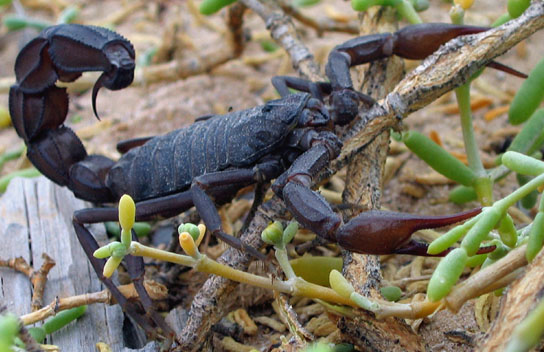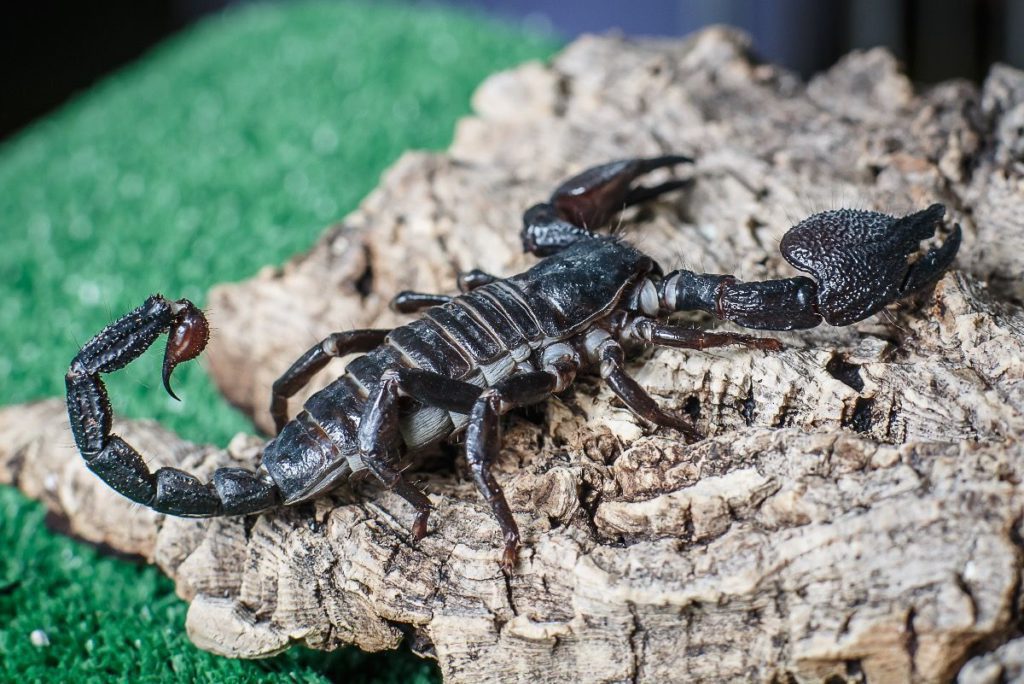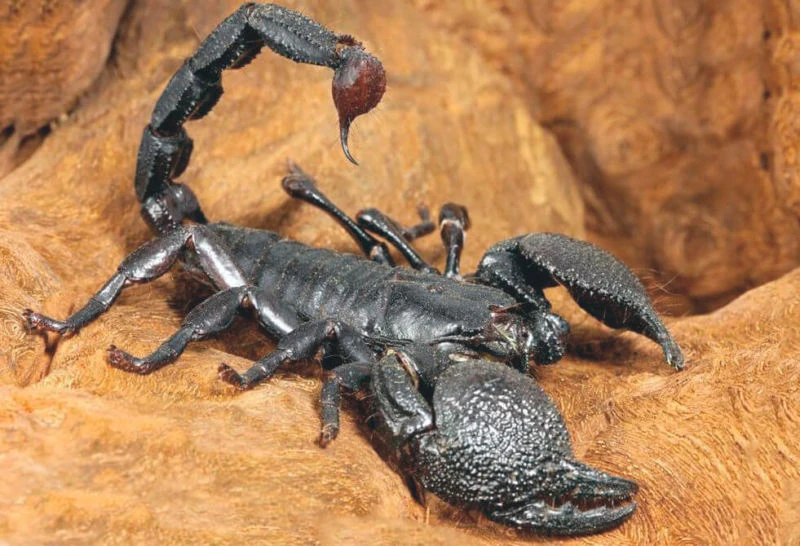The Imperial Scorpion (Pandinus imperator)- one of the largest and most famous Scorpions in the world. Its massive black body, fearsome claws, and ability to bioluminesce under ultraviolet light make it a true mystery of nature.
Despite its menacing appearance, this scorpion relatively peaceful and has weak poisonwhich is rarely dangerous for humans. Thanks to these characteristics, it has become popular among terrariumists and wildlife researchers.
In this article, we will look at biology, behavior, habitat, venom features, breeding process, and threats affecting the survival of this species.

Scientific classification
🔬 Classification of the Imperial Scorpion:
✔ The Kingdom: Animals (Animalia)
✔ Type: Arthropods (Arthropoda)
✔ Class: Arachnids (Arachnida)
✔ Row: Scorpios (Scorpiones)
✔ Family: To Scorpio (Scorpionidae)
✔ Gender: Pandinus
✔ View: Pandinus imperator
📌 Interesting!
• Pandinus imperator got its name because of its large size and powerful appearance, reminiscent of the" emperor " among Scorpions.
* It is one of the most studied Scorpions due to its popularity among exotic animal lovers.
Appearance and dimensions
💠 Main Features:
• Length: 15-23 cm (one of the largest scorpion species).
• Weight: 30-60 g.
• Color scheme: glossy black, with possible shades of dark brown or greenish.
• Chelicerae (claws): large and powerful, covered with granular tubercles.
• Tail: it is thick, consists of five segments and ends with a venomous sting.
📌 Interesting!
Like all Scorpios, Pandinus imperator it glows under ultraviolet light, becoming bluish-green in color.
Anatomy and Physiology
🦴 Chitinous cover
* Protects the Scorpion from enemies and reduces moisture loss in hot climates.
🦷 Oral apparatus
* Uses pincers to tear prey apart and chew food.
🩸 Poison
* Relatively mild, not dangerous to humans (comparable to a wasp sting).
* Used primarily for hunting insects and arachnids.
📌 Interesting!
The Imperial Scorpio relies more on its own resources. powerful clawsthan venom, because they are more effective at holding and killing prey.

Habitat and distribution
🌍 Where does the Imperial scorpion live?
* West and Central Africa (Guinea, Ghana, Nigeria, Togo, Benin, Cameroon).
* Wet forests and savannas.
* Hides under rocks, logs, burrows, and leaf litter.
📌 Interesting!
Unlike the desert scorpion species, the Imperial scorpion needs high humidity (70–80%).
Food and hunting
🍽 What does the Emperor scorpion eat?
• Insects (crickets, cockroaches, beetles).
• Arachnids (spiders, other scorpions).
• Young rodents (in captivity, small mice are sometimes fed.)
💡 How does he hunt?
* Uses sensitive hairs on the claws to detect vibrations from prey.
* Grabs the victim with its pincers and can use the stinger to quickly immobilize them.
📌 Interesting!
Emperor Scorpions in the wild rarely use poisonrelying on the strength of their pincers.
Behavior and social structure
🦎 Activity
* Nocturnal predator, hiding during the day and going out to hunt at night.
👨👩👦 Public behavior
* Can live in groupsWhich is rare among Scorpios.
• Famous minimal cannibalism among relatives.
📌 Interesting!
Imperial Scorpions can live in the coloniesthis makes them unique among most other solitary species.
Reproduction and development
❤️ How does the Imperial scorpion breed?
* The male lays eggs spermatophore on the soil, after which the female takes it into her body.
* Pregnancy continues 7-9 months.
* Born 10 to 30 cubswhich first remain on the mother's back.
👶 Young Scorpions
* Light cream color, shedding several times, becoming darker.
* After the first molt (after 1-2 weeks), they begin to lead an independent lifestyle.
📌 Interesting!
This is a viviparous species: the young hatch inside the mother and are born as formed miniature Scorpions.

Threats and species protection
⚠ Main threats:
✔ Destruction of the natural environment (deforestation).
✔ Mass trapping for sale in terrariums.
✔ Local catch by indigenous tribes for traditional medicine.
🌍 Security measures:
* Included in the CITES list (Convention on International Trade in Wild Species).
* Regulated by international environmental laws.
* Captive breeding programs.
📌 Interesting!
Because of the popularity of the Emperor scorpion in terrariums saved from total extinctionsince most of the individuals on the market come from captive breeding.
Conclusion
The Imperial Scorpion is a true king among Scorpions. majestic views, unusual behavior, and adaptations to life in the tropical rainforest of Africa they make it a unique representative of their range.
Thanks to minimal danger to humans and a peaceful nature, Pandinus imperator he became a favorite of terrariumists and a symbol of the power of nature.
🛑 Its existence depends on the conservation of tropical forests, so it is important to protect the environment in which this “emperor " lives!